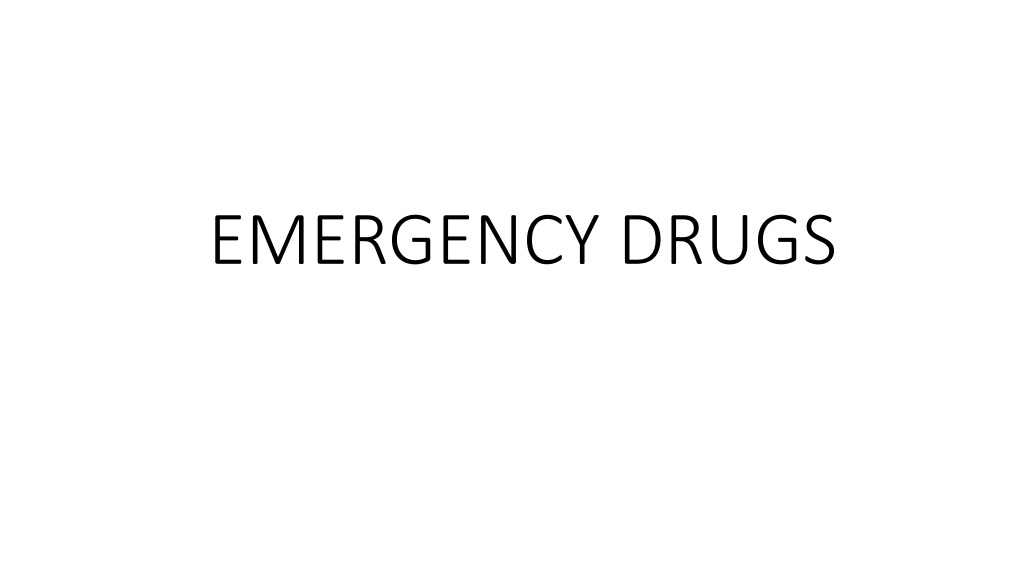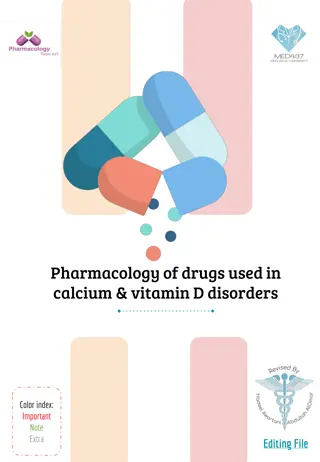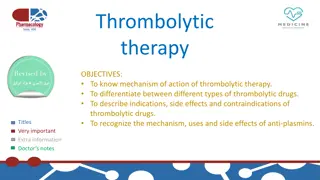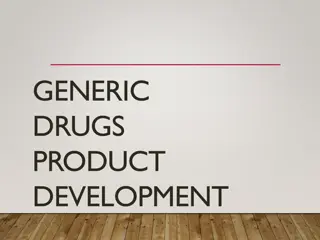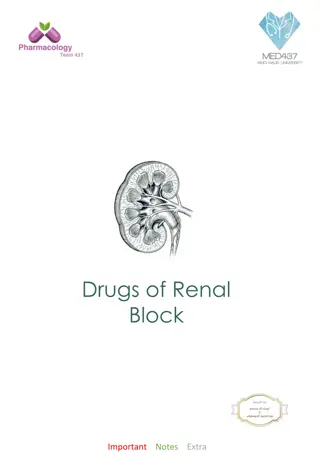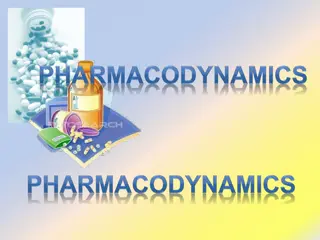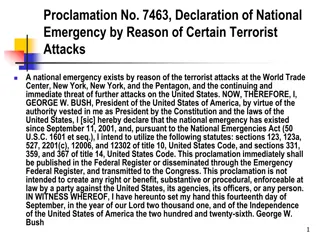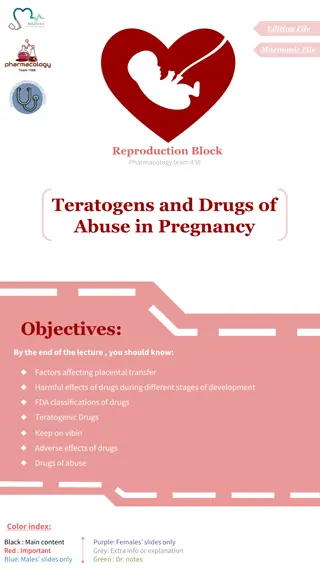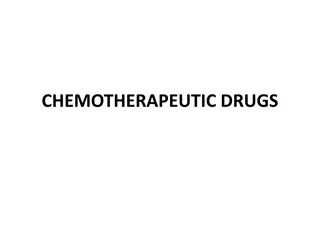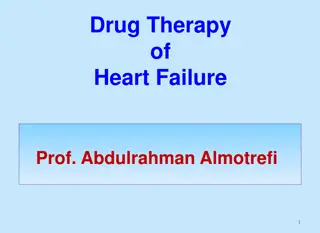Emergency Drugs and Their Mechanisms of Action
Learn about essential emergency drugs such as Adrenaline, Adenosine, Atropine, Furosemide, Calcium Gluconate, and Lidocaine. Understand their mechanisms of action, dosages, indications, and onset times to effectively manage cardiac arrest, anaphylaxis, arrhythmias, and other critical conditions.
Download Presentation

Please find below an Image/Link to download the presentation.
The content on the website is provided AS IS for your information and personal use only. It may not be sold, licensed, or shared on other websites without obtaining consent from the author.If you encounter any issues during the download, it is possible that the publisher has removed the file from their server.
You are allowed to download the files provided on this website for personal or commercial use, subject to the condition that they are used lawfully. All files are the property of their respective owners.
The content on the website is provided AS IS for your information and personal use only. It may not be sold, licensed, or shared on other websites without obtaining consent from the author.
E N D
Presentation Transcript
ADRENALINE LIDOCANE AMIODARONE CALCIUM GLUCONATE FRUSEMIDE ATROINE DOPAMINE NORADRENALINE ADENOSINE METEPROLOL DOBUTAMINE CHLORPHENARAMINE DEXAMETHASONE HYDROCORTISONE MIDAZOLAM TRAMADOL SODIUM BICARBONATE
Adrenaline : Mechanism of action : 1. adrenergic vasoconstriction 2. 2 adrenergic bronchial relaxation Dose : 1ml 1mg onset : 3- 5 min cardiac arrest every 3-5 min DS 10ml+ 40ml ns Indication : cardiac arrest anaphylaxis
ADENOSINE : Mechanism of action : 1. anti arrhythmic 2. slows condition time through the av node can interrupt the re-entry of pathways through the av node , and can restore normal sinus rhythm in patients with paroxysmal supraventricular tachycardia Dose : 2ml- 6mg onset 20-30 sec max dose 12mg
Atropine : Mechanism of action : 1. anti arrhythmic , anticholinergic . 2. these actions increase cardiac output and heart rate , decrease by blocking vagal stimulation in heart . 3. blocks the acetylcholine receptors to dries the secreations . Dose: 1ml 0.6mg onset immediately max dose : 3mg if op poisoning : 4mg or more
Furosemide : Mechanism of action : 1. inhibit reabsorption of sodium and chloride at proximal and distal tubule and in loop of henle Dose : 1ml 10 mg first dose 20 80 mg second dose after 6thhour of 1stdose onset : 2-3 min max dose : 600-800 mg
Calcium gluconate : Mechanism of action : 1. calcium needed for maintenance of nervous muscular , skeletal functions 2. mainly cardiac contractibility Dose : 10ml- 10% ensure 10:10:10 max dose : 3 gram Slow iv
2% lidocaine : Mechanism of action : 1. type 1 antiarrythmic : decrease diastolic depolarization decreasing automaticity of ventricular cells . Dose : 1ml 20mg 50 100mg { 25 50mg/min } repeat q3-5min max dose : 300mg/hr
Tramadol : Mechanism of action : binds to opioid receptors inhibit reuptake of norepinephrine , serotonin , weak opioid analgesics Dose : 1ml-50mg 1ml diluted with 9ml ns max dose : 400mg/day
Metoprolol : Mechanism of action : anti hyertensive lowers BP by beta blocking effects Dose : 1ml-1mg max dose : 400mg / day slow IV
midazolam : Mechanism of action: 1. sedative , anti anxiety , hypnotic 2. depress subcortical levels in CNS Dose : 1ml-1mg max dose : 15mg/day
Dopamine : Mechanism of action : 1. adrenergic agent 2. vasoconstrictor and inotropic effect causes increased cardiac output ,renal flood flow and sodium excretion Dose: 1ml-40mg 5ml- 200mg Ss-5ml+45ml ns ds-10ml +40ml ns
Nor adrenaline: Mechanism of action : 1. adrenergic agent 2. vasoconstrictor 3. BP ,heart rate , cardiac output increases Dose : 1ml-1mg ss -4ml+46ml 5D ds-8ml+42ml 5D
DEXAMETHASONE: Mechanism of action: 1. corticosteroid , anti inflammatory, immuno suppressant 2. decrease inflammation by suppression of poly morpho nuclear leucocytes Dose : 1ml-4mg initially 0.5-20mg
Hydrocortisone : Mechanism of action : 1. corticosteroid 2. anti inflammatory 3. immunosuppressive and salt retaining Dose: 100 500 mg 3-4 times in 24 hours
Sodium bicarbonate : Mechanism of action : 1. alkanilizer 2. reverse acidosis Dose: 10ml-7.5% if severe acidosis , 50 ordered means 5 ampoules have to administer
